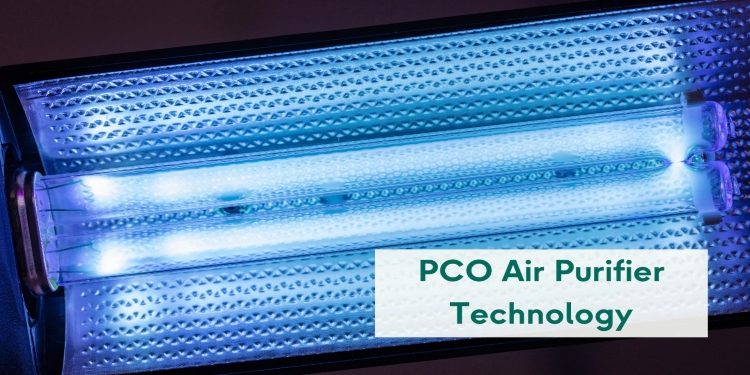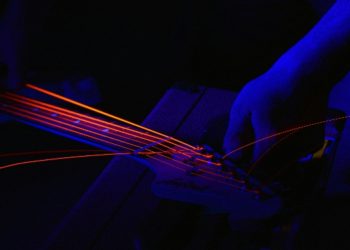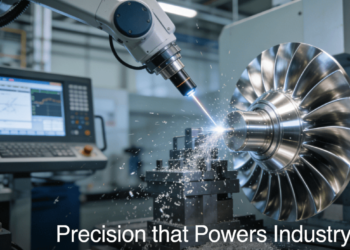Clean air is essential for good health, and it’s something that we all strive for. But, what if the air inside your home or office is polluted? Many air pollutants that are dangerous to your health can’t be seen or smelled, which makes it difficult to tell if we’re breathing clean air. However, with the rise of air purification technologies, we can tackle this issue head-on, and one such technology making headlines is PCO (Photo-Catalytic Oxidation) technology. PCO technology is also used in triad aer products.
What Is PSO Technology?
Firstly, let’s discuss what PCO technology is. PCO is a technology that uses UV-C light and a catalyst, typically titanium dioxide (TiO2), to break down harmful pollutants in the air. When UV-C light hits the TiO2 surface, it interacts with water vapor to produce highly reactive hydroxyl radicals. These radicals attack and break down airborne pollutants, such as VOCs (volatile organic compounds), bacteria, viruses, and mold spores. Once broken down, these pollutants can no longer harm us and are converted into harmless byproducts.
Advantages Of PSO Technology
- Reducing harmful airborne pollutants
One of the major advantages of PCO technology is that it’s incredibly effective at reducing harmful airborne pollutants. A study conducted by the University of Central Florida found that PCO technology reduced airborne microbial populations by up to 99.9% and reduced volatile organic compound levels by more than 80%. It’s also important to note that PCO technology can help eliminate unpleasant odors commonly associated with some of these pollutants, making your indoor air freshener and cleaner.
- Low maintenance and long-lasting
Another benefit of PCO technology is that it’s low maintenance and long-lasting. Unlike air filters, which need to be regularly replaced, PCO technology doesn’t have any disposable parts and only needs to have the UV-C lamps replaced every 1-2 years. This makes it an ideal solution for those who are looking for an air purification system that doesn’t require frequent maintenance.
- Quiet System Operation:
In addition to its effectiveness and low maintenance, PCO technology also offers a quiet system operation. Unlike traditional air purifiers that use fans to circulate the air, PCO technology uses UV-C light and a catalyst to clean the air. This means there are no loud fan noises or vibrations that can disrupt your daily activities or sleep. This makes it a great choice for use in bedrooms or common living areas.
- Improving overall air quality
By effectively reducing harmful pollutants and eliminating unpleasant odors, PCO technology improves the overall air quality in your home. This can have numerous benefits, including reducing allergies and respiratory issues, improving sleep quality, and promoting a healthier environment for you and your family. Additionally, with its quiet operation and low maintenance, you can enjoy clean air without any hassle or disruptions.
Applications Of PSO Technology
Besides improving indoor air quality in residential settings, PCO technology also has various applications in commercial and industrial spaces. It is commonly used in hospitals, hotels, office buildings, and even public transportation vehicles to promote a healthier and more comfortable environment for occupants. With its ability to target a wide range of pollutants and odors, PCO technology is a versatile solution for various indoor air quality needs.
Environmental Benefits
In addition to its effectiveness in purifying indoor air, PCO technology also has environmental benefits. It does not emit any harmful by-products or chemicals into the air, making it an eco-friendly option for air purification. Furthermore, with its low energy consumption and long-lasting capability, PCO technology is a sustainable solution that helps reduce your carbon footprint.
Hospitals And Healthcare Facilities:
Hospitals and other healthcare facilities can greatly benefit from the use of PCO technology. These spaces are often prone to the spread of airborne viruses and bacteria, making it crucial to maintain a clean and healthy environment for patients, staff, and visitors. With its ability to neutralize harmful pathogens, PCO technology can help reduce the risk of infections and illnesses within these facilities.
Office Buildings And Workplaces:
In a typical office building or workplace, air quality can be affected by various factors such as poor ventilation, high levels of carbon dioxide from occupants, and the presence of harmful chemicals emitted from furniture or cleaning products. With PCO technology, these pollutants can be effectively eliminated, creating a healthier and more productive working environment for employees.
Hospitals And Healthcare Facilities:
Hospitals and other healthcare facilities can greatly benefit from the use of PCO technology. These spaces are often prone to the spread of airborne viruses and bacteria, making it crucial to maintain a clean and healthy environment for patients, staff, and visitors. With its ability to neutralize harmful pathogens, PCO technology can help reduce the risk of infections and illnesses within these facilities. Additionally, PCO technology can also help eliminate unpleasant odors that may be present in these spaces, ensuring a more comfortable and pleasant experience for patients and staff alike.
How Does PCO Technology Compare To RCI Technology?
While both PCO (Photo catalytic Oxidation) and RCI (Radiant Catalytic Ionization) technologies use UV light to eliminate airborne pollutants, there are some distinct differences between the two. PCO technology is a two-stage process that involves the activation of a catalyst by UV light to produce highly reactive molecules that neutralize pollutants.
On the other hand, RCI technology is a single-stage process that utilizes a reflective metal plate to generate ions and hydro peroxides that also work to eliminate pollutants. In terms of effectiveness, PCO technology has been shown to have a higher efficiency in neutralizing pollutants compared to RCI technology. Additionally, PCO technology does not produce any ozone as a byproduct, making it safer for indoor use. However, RCI technology has been shown to have a longer lifespan and may require less maintenance compared to PCO technology.











































































